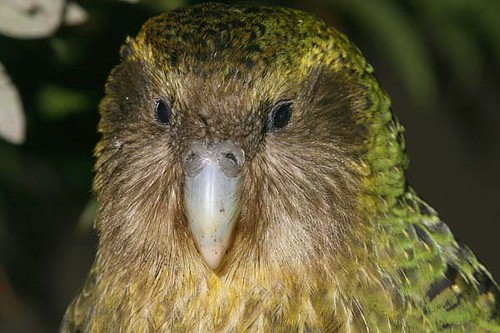 Genetic weakenes may be the underlying couse of recent Kakapo deaths The death of a young male kakapo last week – the fifth since September – may be linked to poor genetics, prompting the Kakapo Recovery team to consider removing Basil, an Anchor Island-based bird, from the breeding programme.
Genetic weakenes may be the underlying couse of recent Kakapo deaths The death of a young male kakapo last week – the fifth since September – may be linked to poor genetics, prompting the Kakapo Recovery team to consider removing Basil, an Anchor Island-based bird, from the breeding programme.
Rooster, who hatched in 2008, was flown off Whenua Hou/Codfish Island on February 29 for veterinary care at Auckland Zoo, after suffering weight loss and loss of appetite. He died the next day, with initial post mortem results indicating a fungal infection – aspergillosis – was widespread throughout his body, including his lungs.
Kakapo Recovery programme manager Deidre Vercoe Scott said the team was investigating the cause and also looking into whether there could be a link with genetics. Of the six young kakapo to die in recent times (birds aged 1-9 years old since 2004), four had been fathered by Basil. Two, Rooster and Purity, had died since September.
“We also know that, of all the dead embryos and hatched chicks of known paternity, 24% of the 33 were fathered by Basil.”
Kakapo Recovery scientist Dr Ron Moorhouse said statistically, the probability of Basil fathering that number of dead chicks by chance, was one in a hundred. Otago University geneticist Dr Bruce Robertson would be looking at Basil’s offspring relative to other kakapo, examining their DNA for variation at the MHC allele. This was the part of the DNA involved with immune response to pathogens, Dr Moorhouse said.
“If we can get to the bottom of it we might, ultimately, be able to identify males likely to produce poor quality progeny before, rather than after, the fact.”
He said it was inevitable that some young kakapo would be genetically compromised because of the very low genetic variation in the parental population.
“We are using artificial insemination and DNA fingerprinting to minimise the loss of genetic diversity from the kakapo population and improve the genetic quality of kakapo chicks.”